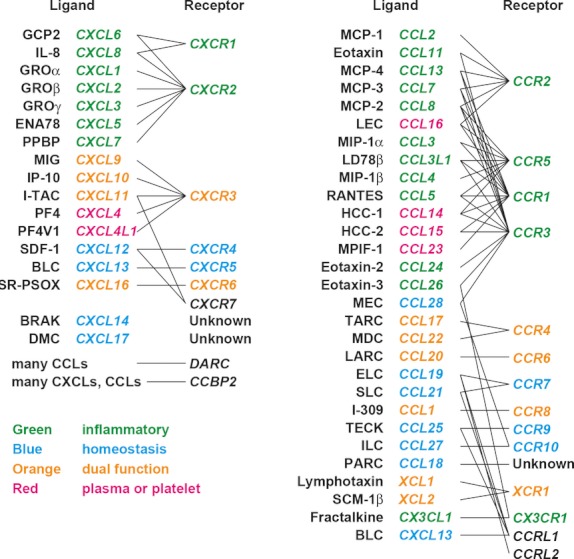Figure 1
Chemokine ligand–receptor binding relationships. Five subfamilies of chemokines, CXC, CC, XC, CX3C, and CX, have been recognized on the basis of the arrangement of the two N-terminal residues of four conserved cysteines. One and three amino acids separate the first and second cysteines in the CXC and CX3C chemokines, respectively, whereas the two cysteines are adjacent to each other in the CC subfamily. The XC (or C) subfamily lacks the first and paired third cysteine residues. The fifth subfamily, CX, which has so far been identified only in zebrafish, lacks one of the two N-terminal cysteine residues but retains the third and fourth (

